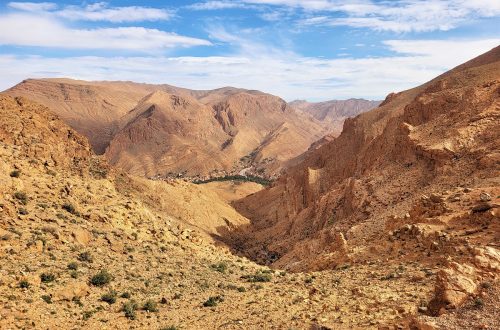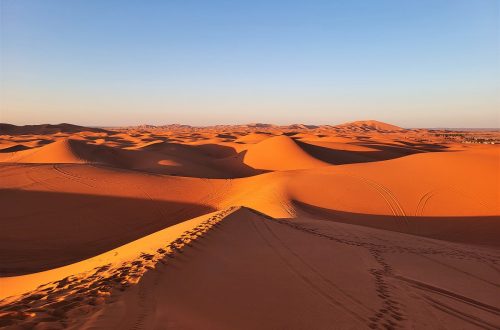Nothing can quite prepare you for the awe-inducing sight that is southern Africa’s mighty Victoria Falls.
The waterfall, which is known as Mosi-oa-Tynua (‘the smoke that thunders’) in the local Sotho language, is a roaring, powerful spectacle and one of the great natural wonders of the world.
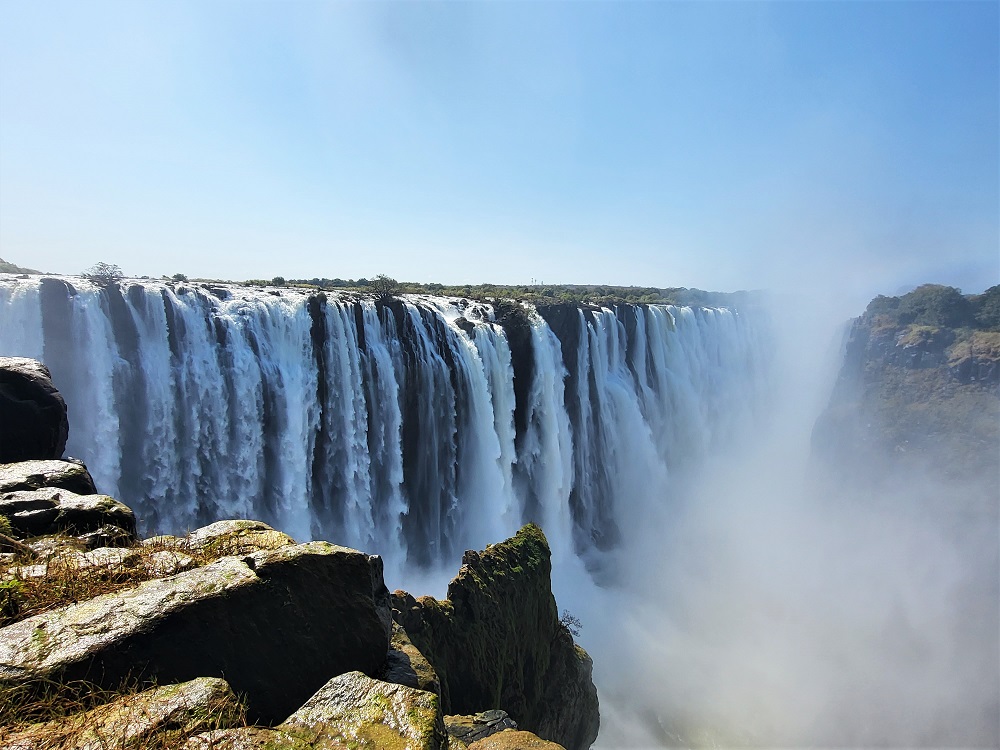
It’s formed by the 1.7m-wide Zambezi River (below) as it cascades over a 300ft gorge, making it the largest waterfall in the world.
It’s estimated that at the height of the rainy season, between February and May, some 500 million cubic metres of water tumble over the gorge every minute.
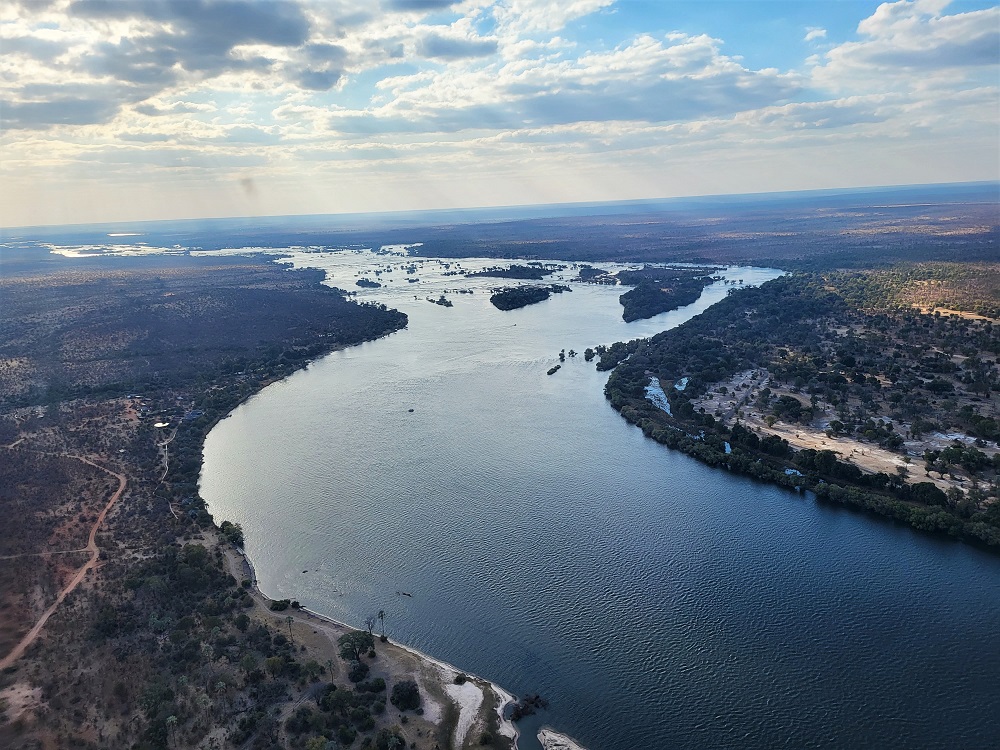
Victoria Falls is situated on the border between Zambia and Zimbabwe, and you can visit it at either Victoria Falls National Park in Zimbabwe or Mosi-oa-Tunya National Park on the Zambian side.
I opted for Victoria Falls National Park, where inside, there’s a one-way system in place that takes visitors around a series of viewing points.

I set off along the trail and soon found myself faced with a huge statue of David Livingstone (above), the Scottish explorer who ‘discovered’ the waterfall in 1855, naming it after Queen Victoria.
Despite his reputation, Livingstone wasn’t the first European explorer to encounter it (the waterfall had been recorded in various maps long before he reached it), but he was the man who made Victoria Falls famous.
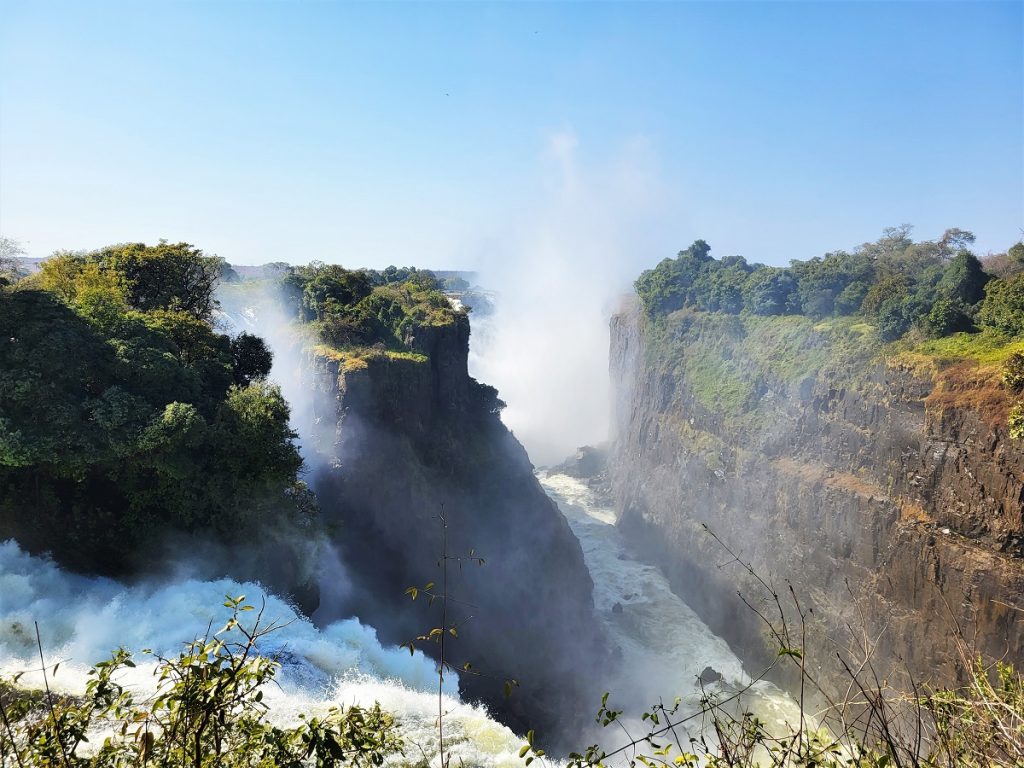
It didn’t take long before I caught my first glimpse of the waterfall – and boy, was I unprepared for what I saw. I knew Victoria Falls was massive, but I’d underestimated just how vast it was.
I also hadn’t appreciated just how much water’s involved and I was taken aback by the almighty roar that came from so much water barrelling over the huge cliff.
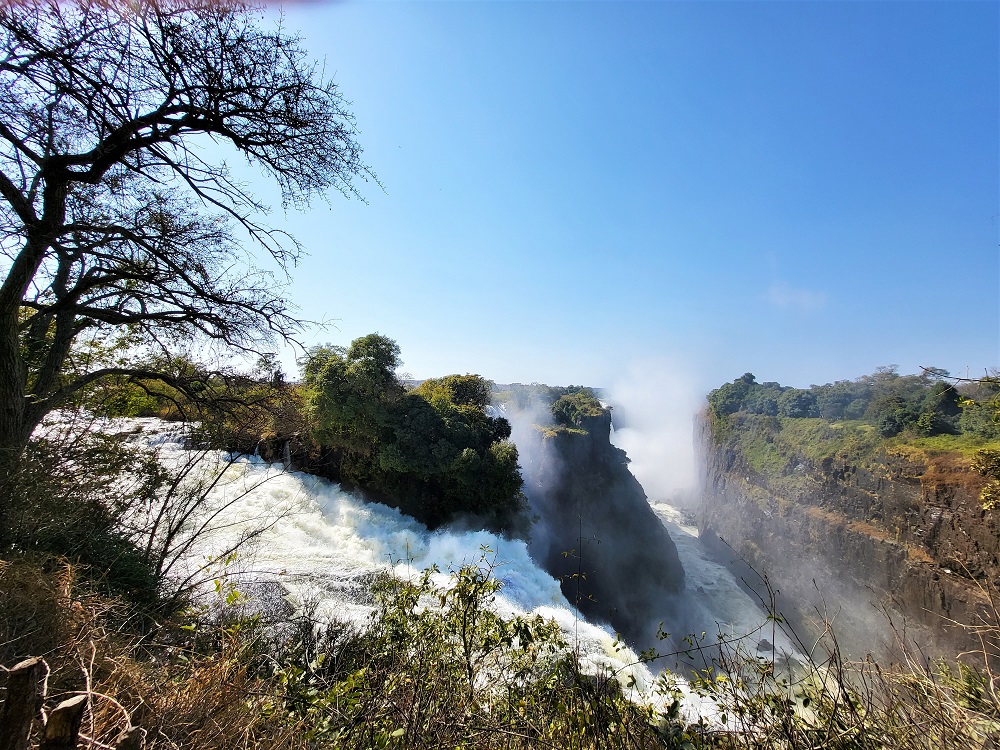
I found myself completely blown away by the jaw-dropping phenomenon in front of me – and it took a little while to take in what I was seeing and hearing.

The position of the waterfall has changed over the millennia as the pounding water’s cut new gorges out of the rock (Victoria Falls’ current position is its ninth).
You can clearly see where the river’s carving out the next major gorge at a spot known as ‘the devil’s cataract’ (above).
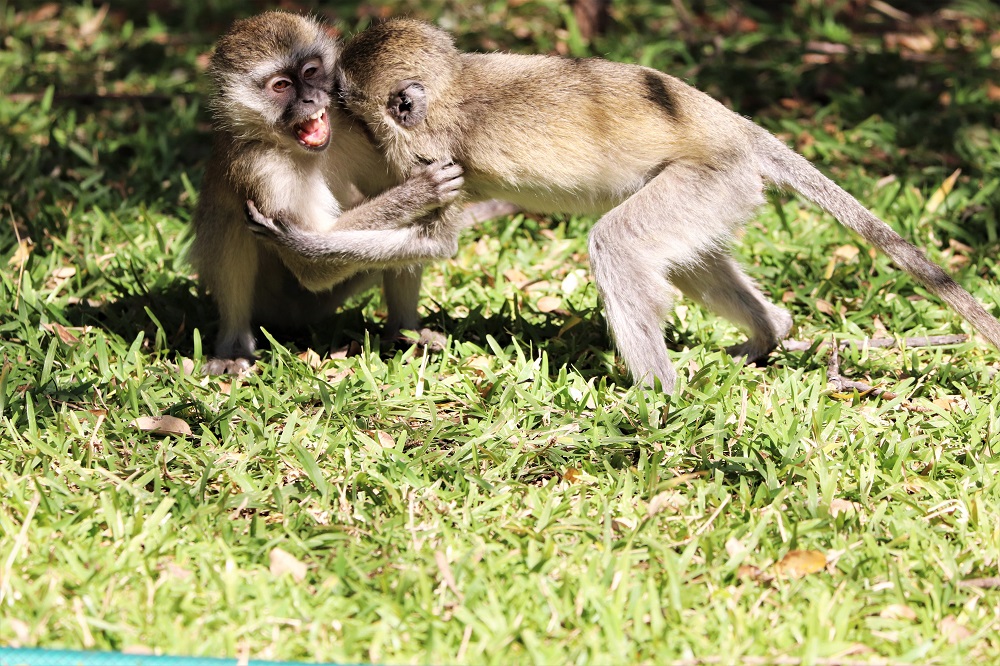
I followed the trail along the side of the devil’s cataract, where at the far end, there was a small clearing where a troop of vervet monkeys was playing.
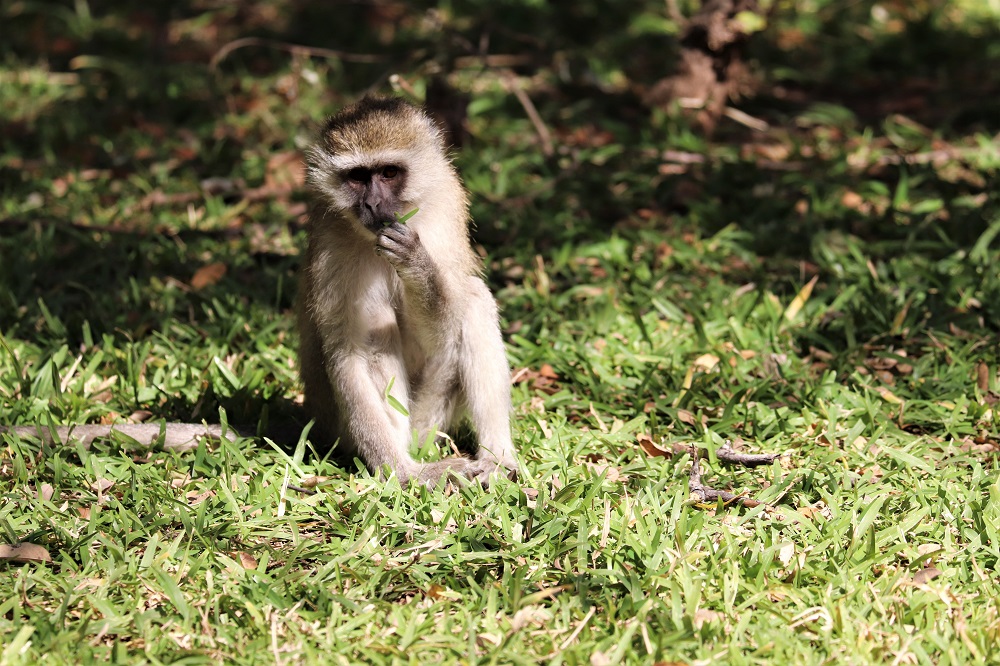
I stopped to take some photos, before retracing my steps along the path, where a striking rainbow had appeared amid the trees at the first viewpoint (below).
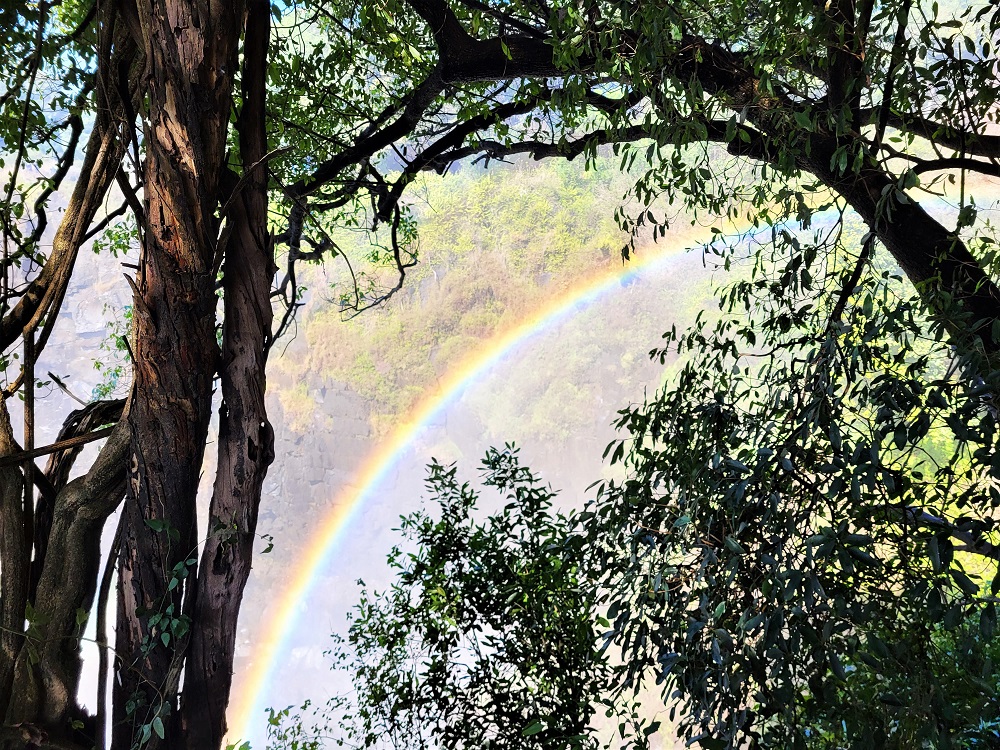
I carried on along the path until it split in two, turning left to explore the rest of the park.
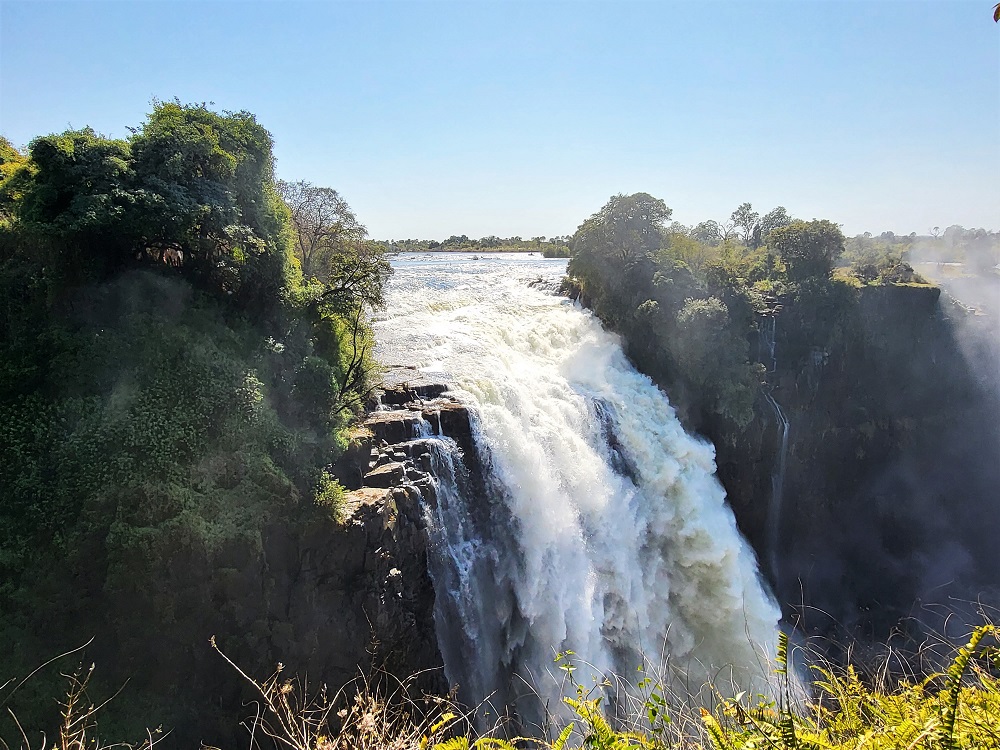
As I walked along the trail, I realised why there had been so many men renting ponchos and raincoats just outside the entrance to the park.

As I got closer to the centre of the waterfall, the spray got heavier and I soon found myself in the middle of a torrential downpour (above).
In no time at all, I was sopping wet, despite sporting a fetching, rented, ankle-length raincoat.
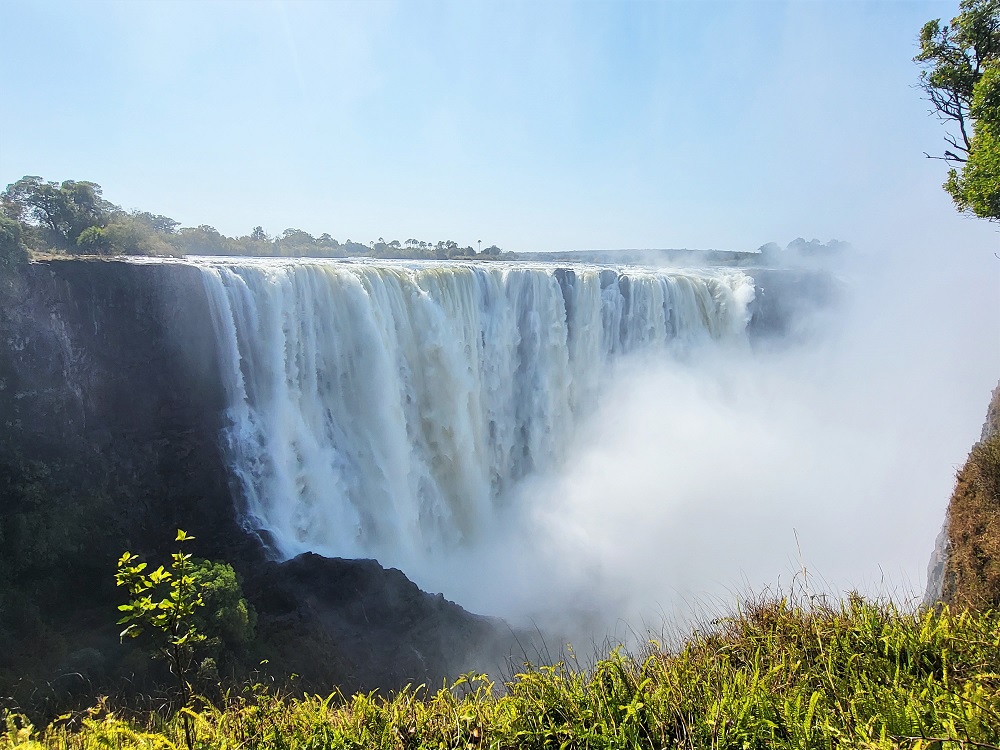
It was worth it because the views were incredible (above). At times, the spray was so heavy it caused a mist that completely shrouded the waterfall, so you couldn’t see a thing.
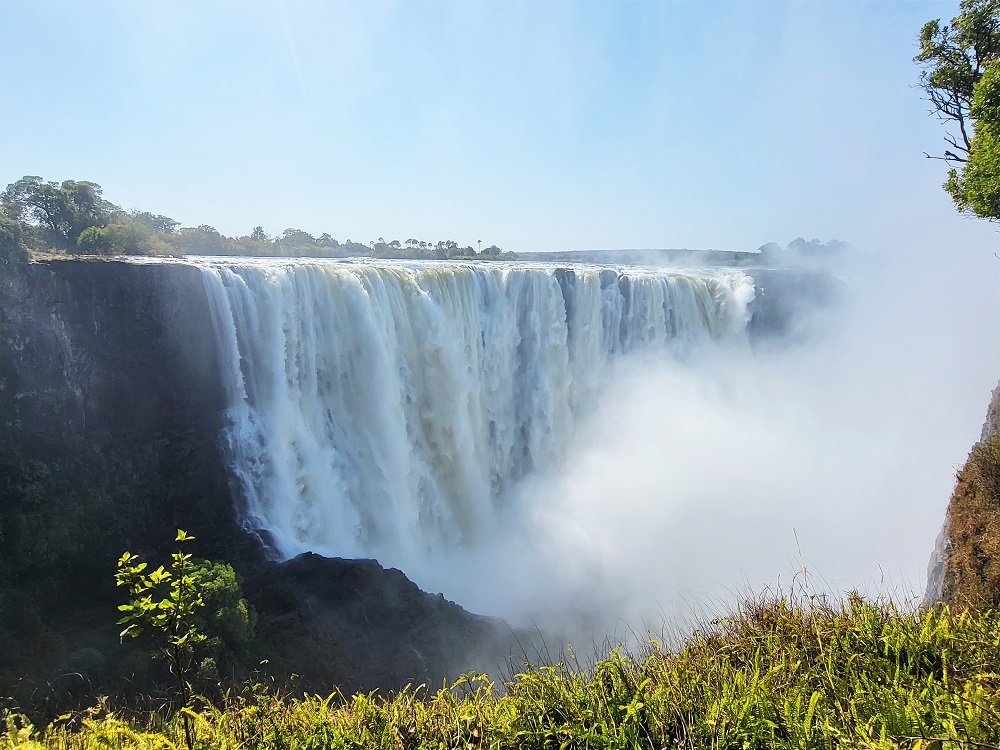
It was worth it because the views were incredible (above). At times, the spray was so heavy it caused a mist that completely shrouded the waterfall, so you couldn’t see a thing.

But if you stayed where you were (getting even wetter in the process), the spray would eventually lift and the waterfall would appear.
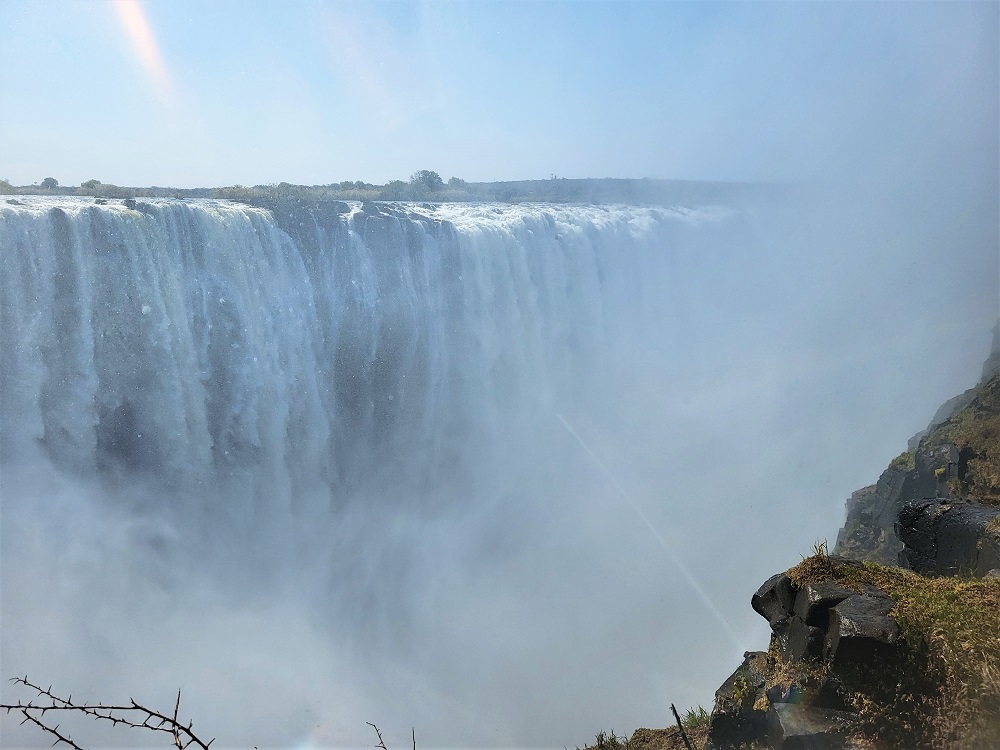
In some spots, you could see a few brave (some might say foolhardy) souls sitting on the edge of the rocks in the middle of the waterfall, surrounded by torrents of water.
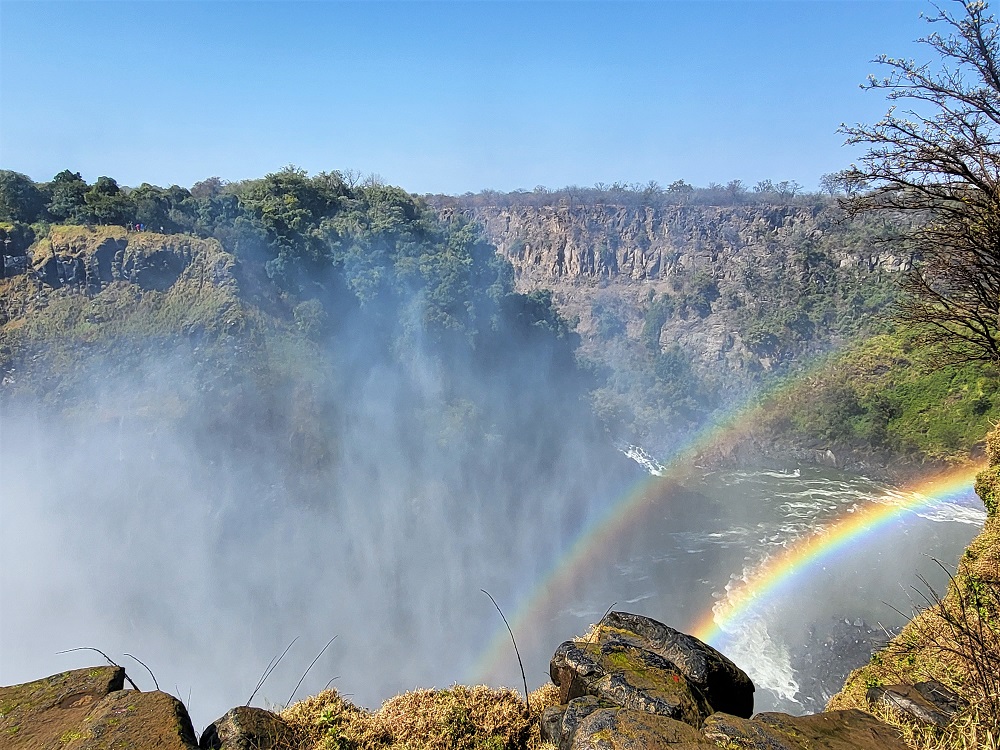
At the penultimate viewpoint, the ground became so wet and slippery, I fell trying to navigate the perilous rocks underfoot.
But when I reached the viewing point, I was rewarded with the sight of a double rainbow over the Zambezi (above).
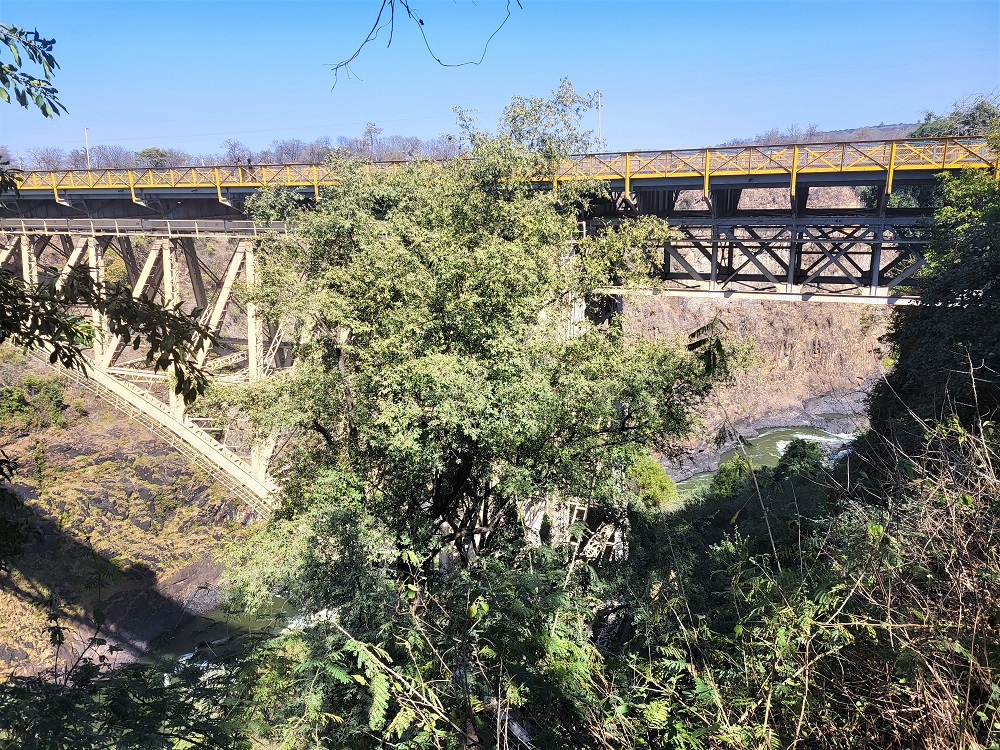
The final viewpoint looked out over a bridge spanning the Zambezi River, which connects Victoria Falls Town in Zimbabwe with the town of Livingstone in Zambia (above).




